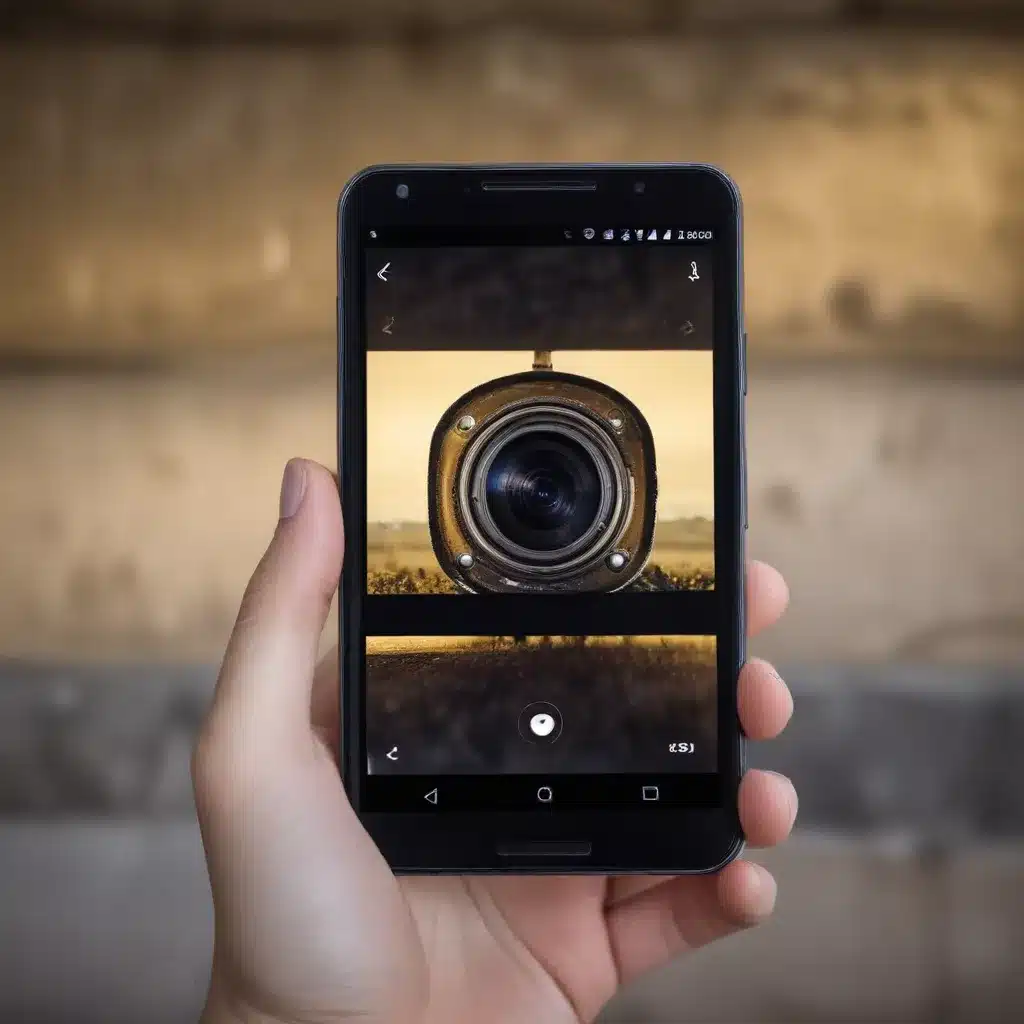
As a seasoned IT professional, I’ve seen firsthand the incredible capabilities of modern Android devices, especially when it comes to their camera features. Whether you’re a budding photographer, a content creator, or simply someone who wants to capture stunning visuals, learning to unlock the full potential of your Android device’s camera can truly transform your mobile photography experience.
Mastering the Fundamentals
Focus and Depth of Field
One of the most crucial aspects of photography is getting the focus right. While the autofocus features on Android devices work well in most scenarios, unlocking the manual focus settings can open up a world of creative possibilities. By taking control of the focus, you can experiment with depth of field, blurring the background to create a more cinematic look or keeping everything in sharp focus for a greater sense of depth.
To access the manual focus settings, dive into your camera app’s settings or explore the available modes. Depending on your device, you might find dedicated focus controls or even the ability to tap and hold on the subject to lock the focus. With some practice, you’ll be able to achieve the exact focus effect you’re aiming for, whether it’s a shallow depth of field or a crisp, all-encompassing image.
Mastering Zoom
Zooming in and out is a fundamental camera feature, but the quality of the zoom can vary greatly depending on your Android device. Newer smartphones often have advanced lenses and sensors that allow for high-quality optical zoom, preserving the image resolution as you get closer to your subject.
Older devices, on the other hand, may rely on digital zoom, which essentially crops and enlarges the image, resulting in a loss of quality and the appearance of pixelated, low-resolution images. To get the best results, try to avoid using the digital zoom and instead move closer to your subject. This “zoom with your feet” approach will ensure that you capture sharp, high-quality images without sacrificing resolution.
Exposure and Lighting
Proper exposure is crucial for capturing the right amount of light in your images. While your Android device’s automatic exposure settings can handle most situations, you may want to take control and fine-tune the exposure to achieve your desired effect.
One of the most common lighting challenges is dealing with backlit subjects, where the background is brighter than the main subject. To address this, try adjusting the exposure manually or tapping on the subject to tell the camera where to focus and expose the image. Additionally, consider the positioning of your subject in relation to the light source. Placing them in front of a window or using a lamp to illuminate them can help create a more balanced and well-exposed shot.
White Balance
Color temperature, measured in Kelvin (K), is an important factor in achieving accurate white balance. Your Android device’s camera will automatically adjust the white balance based on the prevailing light in the scene, but you can take it a step further by manually setting the color temperature.
If your images appear too warm (yellowish) or too cool (bluish), you can adjust the white balance settings to find the perfect balance. Many Android camera apps allow you to fine-tune the temperature and tint, giving you more control over the overall color cast of your images.
Exploring Advanced Camera Features
Multiple Lenses and Sensors
Modern Android devices often feature multiple cameras, each with its own specialized lens and sensor. Depending on your smartphone, you may have access to a wide-angle lens, a telephoto lens, or even a dedicated depth-sensing camera. Familiarize yourself with the different lenses and their capabilities to decide which one best suits your photographic needs.
When using multiple cameras simultaneously, it’s important to ensure that the white balance and exposure are consistent across all sources. Start by setting your “main” camera as the reference and then match the other cameras to it, creating a cohesive look throughout your multi-camera setup.
Camera Settings and Customization
Delving into your Android device’s camera settings can unlock a treasure trove of features and customization options. Explore the various settings, such as aspect ratio, HDR, night mode, and advanced manual controls, to fine-tune your camera’s performance and create the exact look you desire.
Additionally, consider experimenting with different camera apps, as they may offer additional features and settings beyond the stock camera app. These third-party apps can provide more granular control over the camera’s functionality, allowing you to tailor the experience to your specific needs.
Putting It All Together
To truly maximize the potential of your Android device’s camera, it’s essential to get out there and practice. Experiment with different lighting conditions, subjects, and camera settings to develop your photographic skills. Pay attention to the details, such as focus, exposure, and white balance, and don’t be afraid to make adjustments until you achieve the desired result.
As you continue to explore the capabilities of your Android device’s camera, you’ll unlock a world of creative possibilities. Whether you’re capturing stunning landscapes, portraits, or dynamic action shots, the key is to embrace the versatility of your smartphone and push the boundaries of what it can do.
Remember, the ITFix blog is here to support you on your journey. We’re dedicated to providing practical tips, in-depth insights, and the latest technology trends to help you make the most of your Android device and unlock its full potential. Keep exploring, experimenting, and let your creativity shine through your mobile photography.












